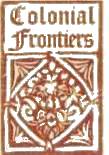


 | After graduating from UCLA in 1971, Michael Bernstein hitch-hiked across the U.S. and took off to South America on a cargo flight from Miami. He discovered a continent frozen in time. One could investigate primitive and historic cultures as they existed for thousands of years. Thus started Michael's lifelong career of collecting and offering hand made crafts, artifacts, and colonial antiques from around the world.
In 1979 he met his future wife and companion in travel, Jeanne, in a Chicago suburb antique shop that she owned. They teamed up and started their traveling life together. Jeanne added her Elmhurst College Art degree to Michael's adventure and export talents and they were off, raising two children along the way.
Eventually the couple settled in Tucson, Arizona because it seemed to fit their lifestyle and the colonial art they were offering. After exploring every country in South America, from Tierra del Fuego, Argentina, to the Orinoco river of Venezuela, the Bernsteins, in their search for unusual and unique world treasures, broadened their explorations to other continents.
Traveling throughout Asia, Indonesia, Africa, and Europe, they have unearthed the essence of the Colonial experience in each of these regions of the world. Travels in these regions are always rough but rewarding, as evident by the beautiful inventory now available at Colonial Frontiers.
Meet the other partner in business and travel, Mary DeFilippo. A family friend for the past 20 years, Mary became associated with the Bernstein's business in 1998. She met Michael and Jeanne at their first Tucson business location in 1980, selling them antique textiles she had collected during her teaching mission in Bolivia. She brings her degree in Fine Arts, and experiences in living and traveling abroad in such places as Indonesia, Peru, Ecuador, and Mexico, which complements the exotic ambiance at Colonial Frontiers.
Mary has made several buying trips with the Bernstein's to Spain, Mexico and India. For months she holds down the fort at the gallery while Michael and Jeanne are cruising the world hunting for treasures worthy of being offered at Colonial Frontiers. |











No comments:
Post a Comment
Pipestone, MinnesotaFrom Wikipedia, the free encyclopedia
Jump to: navigation, search Pipestone, Minnesota
City
Downtown Pipestone
Motto: "Home of the Red Stone Pipe"[1]
Location of Pipestone, Minnesota
Coordinates: 43°59′52″N 96°19′2″W / 43.99778°N 96.31722°W / 43.99778; -96.31722
Country United States
State Minnesota
County Pipestone
Government
• Type Mayor – Council
• Mayor Laurie Ness
Area[2]
• Total 4.18 sq mi (10.83 km2)
• Land 4.18 sq mi (10.83 km2)
• Water 0 sq mi (0 km2)
Elevation 1,736 ft (529 m)
Population (2010)[3]
• Total 4,317
• Estimate (2012[4]) 4,196
• Density 1,032.8/sq mi (398.8/km2)
Time zone Central (CST) (UTC-6)
• Summer (DST) CDT (UTC-5)
ZIP code 56164
Area code(s) 507
FIPS code 27-51388[5]
GNIS feature ID 0649527[6]
Website www.pipestoneminnesota.com
Pipestone is a city in Pipestone County, Minnesota, United States. The population was 4,317 at the 2010 census.[7] It is the county seat.[8][9] The city is also the site of the Pipestone National Monument.
Contents [hide]
1 History
2 Geography
3 Demographics
3.1 2010 census
3.2 2000 census
4 Economy
5 Arts and culture
5.1 Museums and other points of interest
6 Government
7 Education
8 Infrastructure
8.1 Transportation
9 Notable people
10 Henry Wadsworth Longfellow
11 References
12 External links
History[edit]Charles Bennett and Daniel Sweet founded Pipestone in 1876. Bennett was intrigued by the prospect of visiting the site he had read about in Longfellow's poem. Despite blizzards, prairie fires, droughts and grasshoppers, the young village survived. In 1879, 22 businesses were operating in Pipestone, and by the following year that number had grown to 53. Pipestone was incorporated as a village in 1881. By 1890, Pipestone had train service on four different rail lines and had become a travel and business center hub for southwestern Minnesota. Pipestone was named after the red stone quarried by Native Americans to make pipe bowls.[9]
Pipestone is located in southwestern Minnesota. It is a leader in wind technology with nearly 800 wind generator towers located nearby on one of the area's top resources.
Pipestone was formerly home to a Native American Boarding School, which were known for their repression of Native American culture and contribution to the genocide and ethnocide of Native American people.[citation needed]
Geography[edit]According to the United States Census Bureau, the city has a total area of 4.18 square miles (10.83 km2), all of it land.[2]